The whole life of Mata Hari (real name Margareta Gertrude Zelle ) was one big adventure. Having no connections or means of livelihood, she set off to conquer Paris. Without any choreographic skills, she declared herself a dancer. Far from being a beauty in the classical sense of the concept, she broke the hearts of the most famous and wealthy men of the Old World. And, of course, she was a master of self-PR. She talked left and right about how her dancing is part of religious rituals. That she is a princess by birth. That she grew up in the monasteries of the East. And almost everyone believed her, including journalists. She had wealth, recognition, countless lovers, but this was not enough for her. More precisely, at some point she became bored.
Mata Hari. Special features Read more
How boring life is!
Mata Hari decided to add variety to her already wildly rich life by starting to promote herself in military circles as an experienced spy. And they believed her again. So she became an agent of German intelligence. Having many lovers among the military, she skillfully ferreted out classified information. At first, Mata Hari coped with the role of intelligence officer brilliantly. Generals and ministers who passed through her bed unwittingly leaked important information to her. Inspired by such success, Mata Hari at some point lost her vigilance. Her excessive activity attracted the attention of the French intelligence services. Deciding to be proactive, the famous dancer and adventurer herself came to the French counterintelligence office. Right from the start, she stated that she had never worked for Germany, but was ready to serve the interests of France. They almost believed her again. Her words sounded too arrogant and confident. They were about to make Mata Hari a French agent, but during a peculiar interview she inadvertently blurted out too much. She named the name of the German recruiting agent, whom, according to her legend, she could not possibly know. It was too suspicious. But in order to finally lull the ex-dancer’s vigilance, the security services pretended to believe her.
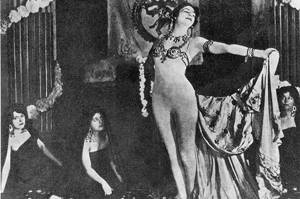
The legend of a super spy. Who was Mata Hari really? More details
"Where's my breakfast?"
Counterintelligence sent a newly minted agent in the person of Mata Hari on a small mission to Madrid. Naturally, these movements could not go unnoticed by the Germans. German intelligence simply leaked it to the French authorities. When this happened, Mata had no idea about anything. She returned to Paris, confident that a new, more serious task awaited her. But handcuffs and a court martial awaited her for spying for the enemy in wartime.
The trial was closed. Moreover, the case materials are still classified: for such cases, France set a “secrecy period” of one hundred years, so access to the documents should soon be open. What is known is that the accusation made her a real monster. Realizing that the matter was bad, Mata Hari’s lawyer suggested that she do what she had always been so good at: lie. The ex-dancer told the court that she was pregnant. But the deception was quickly revealed. Mata Hari was sentenced to death.
The condemned woman behaved with dignity until her last minute. She was indignant that the execution was scheduled for the morning, without giving her breakfast. While tied at the execution stake, she refused to wear a blindfold. Her last words were: “I’m ready, gentlemen!”
“A courtesan, yes, but not a spy”: scandalous facts from the biography of Mata Hari
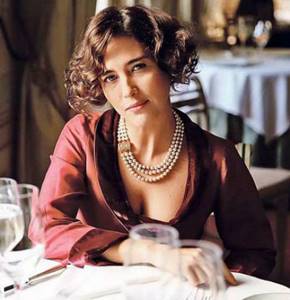
The series “Mata Hari” with Vaina Giocante // Photo: Still from the series
On Monday, March 20, the series “Mata Hari” starts on Channel One. This international project has already gained recognition among foreign viewers. The biographical drama, produced by directors Julius Berg and Denis Berry, tells the story of Margaretha Zelle, who is remembered as Mata Hari. The notorious spy and talented dancer captivated hundreds of men at the beginning of the 20th century. Many fans of the artist knew that after contacting her they could be shot, but still could not resist her charm.
How “Mata Hari” was filmed: Matveev’s French novel and Isakova’s treasures
Mata Hari started out as a circus performer, but won the recognition of the Parisian public and received the nickname “Queen of Dance.” After meeting her, some men abandoned their families and forgot about everything. During World War I, she became a spy, trusted with secrets and secrets by high-ranking politicians and military personnel. Her name was mentioned in German, French and Russian military archives. “StarHit” decided to recall the most striking facts from the biography of Margareta, before whom the most influential men in Europe bowed their knees.
Margaretha Zelle was born in 1896 in the Netherlands. She was the only daughter of Adam, the owner of a hat shop. For the first thirteen years of her life, the girl did not need anything, since her father’s business was going well. However, then he went bankrupt, and his wife, Margaretha's mother, died. The girl was sent to Leiden to learn the profession of a kindergarten teacher. According to some reports, Zelle was harassed by the director at the school, so she was taken from there.
When the girl turned 18, she married Captain Rudolph McLeod, who was much older than her. The husband beat Margareta and drank constantly. She suffered from this attitude towards herself. In addition, the man did not hide his mistresses. The family lived on an island in Indonesia. Married to Rudolf, they had two children. However, Margaretha's son died in 1899, presumably from complications of syphilis, which was passed on to him from his parents.
During her stay in Java, Zelle began to become interested in dancing. Disappointed in her marriage to Rudolf, she tried to find solace. That is why she immersed herself in studying local culture and customs. The woman mastered some elements from Indonesian dances, and later came up with the pseudonym Mata Hari, which was translated from Malay as “sun”.
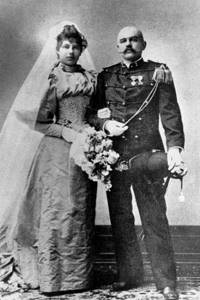
Margareta Zelle with Rudolf McLeod // Photo: Social networks
In 1903, Margareta divorced her husband, was left without money and began to look for ways to earn money. Since Zelle could not imagine her life without dancing, she decided to develop in this direction. The woman went to Paris, where she worked as a circus rider under the name “Lady Gresha McLeod.” But since 1905, Zelle began performing with an oriental program under the pseudonym Mata Hari.
The artist pulled out a lucky ticket when she met the influential industrialist and owner of the Museum of Oriental Art, Emile Etienne Guimet. The man was fascinated by Margareta's grace and exotic dances. He fell in love with her and forgot about everything in the world. However, Mata Hari wanted more - to conquer Paris. She persuaded a fan to give her a private performance in one of the capital's salons.
The dances impressed the French public. To further interest the audience, Mata came up with a legend that added mystery to her personality. During one of the performances, a man in oriental clothing burst into the hall. He threw himself on his knees in front of the woman and began to beg her for something in a foreign language. He was forcibly taken out of the hall. The guests demanded an explanation, but Mata Hari calmly continued the number. Later, the dancer explained to reporters what happened. According to her, this man was a servant of her mother, supposedly an Indian princess, who wanted to bring her daughter home and marry her to the Rajah.
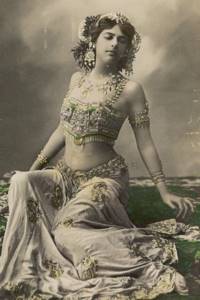
Margareta first became interested in dancing while living in Indonesia // Photo: Social networks
This story piqued the interest of the French. In addition, at the end of each number, Mata Hari completely undressed, explaining that this was required by Shiva, the Hindu deity. Before this, none of the dancers allowed themselves such bold antics.
“Madam Mata Hari learned these absolutely authentic Brahman dances in Java from the best priestesses of India. These dances are kept secret. In the depths of the temples, only brahmins and devadasis can watch them. To our great joy and delight for the eyes, Mata Hari danced for us the dances of the princess and the magic flower, the invocation of Shiva and the dance of Subramayen. She wears a very simplified bayadera outfit; at the end, as the apogee of simplicity, she stands before Shiva proudly and without a veil, only in a leotard of bodily light, hiding her nakedness. To appease God, she presents herself to him. It's very impressive, very brave and very chaste. Mata Hari is Dutch, Scottish and Javanese at the same time. From the northern races she has a tall stature, a strong body, and in Java, where she grew up, she acquired the flexibility of a panther, the movements of a snake,” this is what French newspapers wrote about the dancer in the early 1900s.
A few years later, her name was known not only in Paris. Mata Hari forgot about Gim, took a new lover and went on tour. In Monte Carlo, the woman performed on the stage of the theater, where among her spectators was Prince Albert I of Monaco himself. The dancer was also involved in one concert with the participation of Fyodor Chaliapin, Emma Calvet and Geraldine Farrar. Jules Massenet and Giacomo Puccini competed with each other because they wanted to write music for her performances.
For the sake of Mata Hari, men were ready to do anything. They gave her expensive gifts, arranged exciting trips, and also gave her funds for the development of art. Thus, the dancer opened her own salon and became a courtesan.
In 1914, Mata Hari took a German lover. However, she used the man to get acquainted with a more senior person, Crown Prince Wilhelm. The representative of the royal family was so fascinated that the Berlin Metropol Theater began preparing a new play with Mata Hari in the title role. Rumor has it that the dancer really wanted to become close to the royal family.
The courtesan's plans were destroyed by the First World War. Margareta wrote love letters to Wilhelm. But her letters were intercepted by German intelligence. This was reported to the emperor, who gave the order to immediately expel the dancer from the country. Colonel Werner von Mirbach was to carry out the will of the ruler. However, in addition to this, he had the task of recruiting a dancer for German intelligence. Mata Hari agreed.
Having left Germany and lived for several months in Holland, the dancer returned to Paris and settled in a house that was given to her by a French banker. The woman continued to organize evenings attended by soldiers and officers of the Allied forces. The spy managed to obtain the information she was interested in using her feminine charm and cunning.
Visitors to Mata Hari's boudoir were doomed to death in advance. According to martial law, anyone guilty of leaking important data was shot. However, they were ready to do anything to spend a night of love with a woman.
One of Mata Hari’s most high-profile novels is her relationship with Russian officer Vladimir Maslov. The captain served in the Russian expeditionary force and was in the retinue of Nicholas I. The dancer planned that after the war, the chosen one would introduce her to the Russian imperial family.
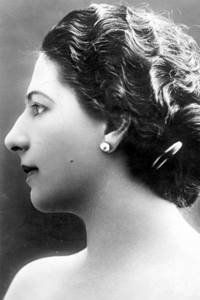
Mata Hari loved to travel // Photo: Social networks
The first information about a woman’s work as a spy for Germany appeared from French counterintelligence officers in 1916. On instructions from the German command, Mata Hari was supposed to get to the Champagne region, where closed hospitals were located. However, the woman was confident that she would get there without any problems. With such a desire, Mata Hari aroused suspicion among the French command. They put her under surveillance.
The spy was caught and interrogated about her connections with the German side. The French decided to recruit the woman, and she became a double agent. However, on February 13, 1917, Mata Hari, who returned from a foreign mission to Paris, was arrested by intelligence and accused of spying for the enemy. She was tried for transmitting information to the enemy that led to the death of several divisions of soldiers. According to the verdict, the woman faced the death penalty. Her lawyer suggested lying about the pregnancy, but she refused. Margaretha was shot at the firing range in Vincennes on October 15, 1917. She was only 41 years old.
Rumor has it that before the execution she shouted: “I’m ready, gentlemen!” Several sources use another phrase: “A prostitute - yes, but a traitor - never!”
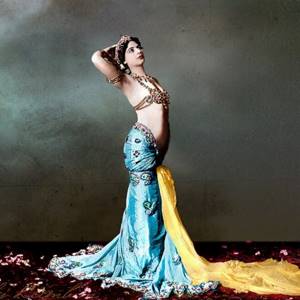
Mata Hari's outfits // Photo: Social networks
The story of Mata Hari formed the basis of several films, as well as theatrical productions. The first film about a spy was released in 1920 with German actress Asta Nielsen in the title role. In addition, many literary figures dedicated works to the famous dancer. One of the latest creations was the book “Mata Hari. Spy" by Paulo Coelho. Despite criticism from the writer’s fans, it is his heroine who utters phrases that the real Mata Hari could say.
“I chose a bad time to be born a woman, and there’s no way to fix it. It is not given to me to know whether they will remember me in the future, but if this happens, I want them to see me not as a victim, but as a person who fearlessly followed his path and was not afraid to pay the full price for it,” says the heroine Mata Hari on the pages of Coelho's work.











